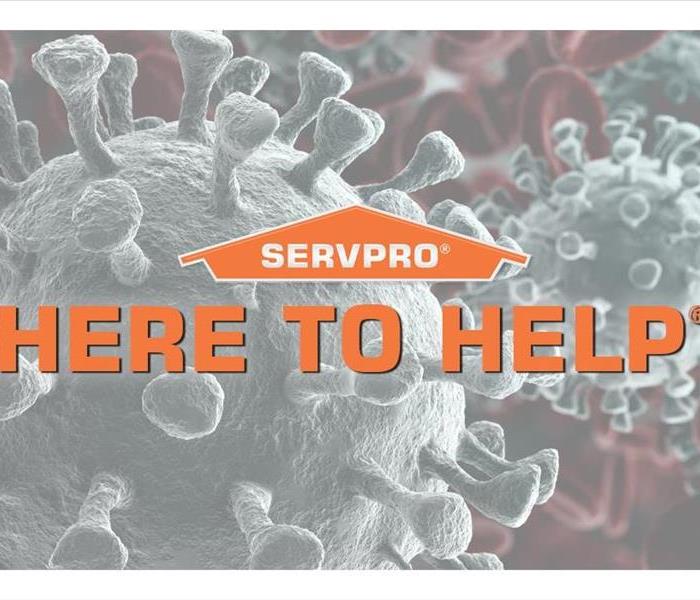Antimicrobials
8/19/2021 (Permalink)
Antimicrobials destroy or inhibit the growth of microorganisms such as bacteria, viruses, protozoans, and fungi. You might find antimicrobials in your home, school, or workplace. A common type is a sanitizer. Sanitizers destroy 99.9% of bacteria in about 30 seconds. It is important to note that sanitizers are effective against bacteria and not other forms of microorganisms. A sanitizer is used to reduce, but not eliminate microorganisms. Sterilizers are another type of antimicrobial. Unlike sanitizers, sterilizers are used to destroy or eliminate all forms of microbial life such as fungi, viruses, spores, and bacteria. They are mostly used in a medical setting. Disinfectants are another type of antimicrobial. They are similar to sterilizers because they kill bacteria and fungi, but are only effective against certain viruses. They are typically used in household surfaces as well as medical settings.
Spot and Stain Removal
8/5/2021 (Permalink)
Our technicians here at SERVPRO have many skills to handle all kinds of damages. One of those skills is spot and stain removal. The removal of spots and stains is made up of 8 steps. Step 1 requires that the excess soil be removed. This is an important step because removing the excess soil will lead to easier removal of the spot/stain. For Step 2, the technician will need to determine the type of soil. Determining the soil will let the technician know what to do and what not to do when removing the stain. Step 3 is knowing the fiber type. Knowing what kind of fiber is being dealt with is vital because the technician will know the advantages and disadvantages of that fiber. This will facilitate the removal process. Step 4 is to qualify with the customer. This means that the technician will document the results and go over the details with the customer. Step 5 is to select the spotting product. The technician's findings from the previous steps will let the technician know what product to use depending on the soil and the fiber. Step 6 is to apply the product. The technician will test the product and make sure to take his/her time while using minimal applications. Step 7 is to rinse, extract, and neutralize. The final step of the process is to simply dry the area.
Routine environmental cleaning
3/13/2020 (Permalink)
 We are always here to help.
We are always here to help.
We now have two new Procleaning services to offer residential and business properties.
Package 1 Minimize the transmission of emerging viral pathogens General surface cleaning – physically removes visible dirt, organic matter, viruses, fungi, and bacteria. General surface cleaning is accomplished with water, detergent, and physical scrubbing of the surface. The guiding principal is to remove microbes if possible, rather than kill them (with a sanitizer or disinfectant). In addition, thoroughly cleaning a surface can reduce the need to disinfect because without the nutrients and moisture needed to survive and multiply, most microbes cannot live on a clean and dry surface for very long. Package 2 Limit the survival of emerging viral pathogens - Sanitizing – reduces but does not necessarily eliminate all the bacteria on a treated surface. Sanitizers do not have claims for viruses or fungi. To be a registered sanitizer, the test results for a product must show a reduction of at least a. 99.9% in the number of each type of bacteria tested on non-food-contact surfaces. Examples of non-food-contact sanitizers include carpet sanitizers, air sanitizers, laundry additives, and in-tank toilet bowl sanitizers. - Disinfecting – works by using chemicals to kill germs on surfaces. This process does not necessarily clean dirty surfaces or remove germs. Disinfecting destroys or irreversibly inactivates infectious or other undesirable microbes, but not necessarily the spores of bacteria and fungi. The number of microbes killed during a disinfecting process will vary, depending on the specific chemical and how it is used.
Routine environmental cleaning
3/13/2020 (Permalink)
We now have two new Procleaning services to offer residential and business properties.
Package 1 Minimize the transmission of emerging viral pathogens General surface cleaning – physically removes visible dirt, organic matter, viruses, fungi, and bacteria. General surface cleaning is accomplished with water, detergent, and physical scrubbing of the surface. The guiding principal is to remove microbes if possible, rather than kill them (with a sanitizer or disinfectant). In addition, thoroughly cleaning a surface can reduce the need to disinfect because without the nutrients and moisture needed to survive and multiply, most microbes cannot live on a clean and dry surface for very long. Package 2 Limit the survival of emerging viral pathogens - Sanitizing – reduces but does not necessarily eliminate all the bacteria on a treated surface. Sanitizers do not have claims for viruses or fungi. To be a registered sanitizer, the test results for a product must show a reduction of at least a. 99.9% in the number of each type of bacteria tested on non-food-contact surfaces. Examples of non-food-contact sanitizers include carpet sanitizers, air sanitizers, laundry additives, and in-tank toilet bowl sanitizers. - Disinfecting – works by using chemicals to kill germs on surfaces. This process does not necessarily clean dirty surfaces or remove germs. Disinfecting destroys or irreversibly inactivates infectious or other undesirable microbes, but not necessarily the spores of bacteria and fungi. The number of microbes killed during a disinfecting process will vary, depending on the specific chemical and how it is used.






 24/7 Emergency Service
24/7 Emergency Service
